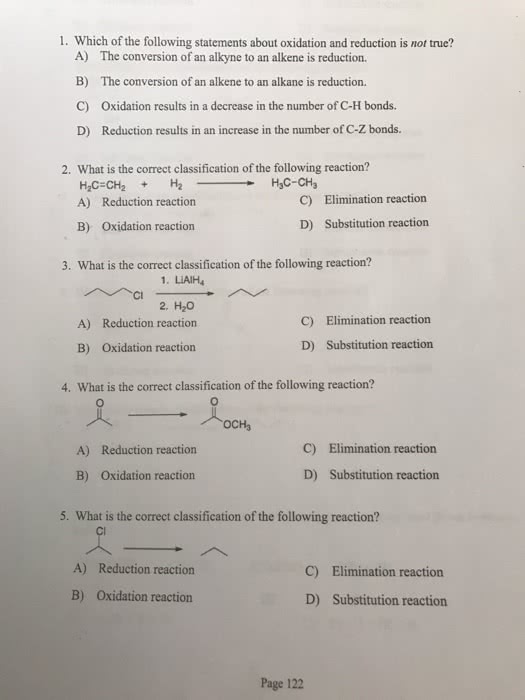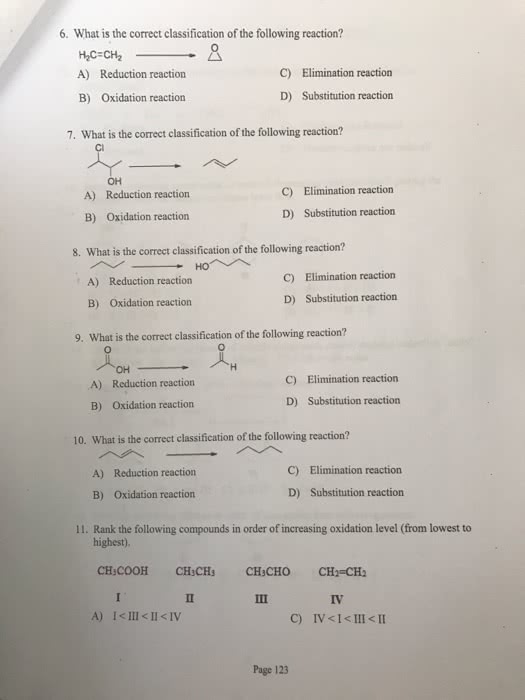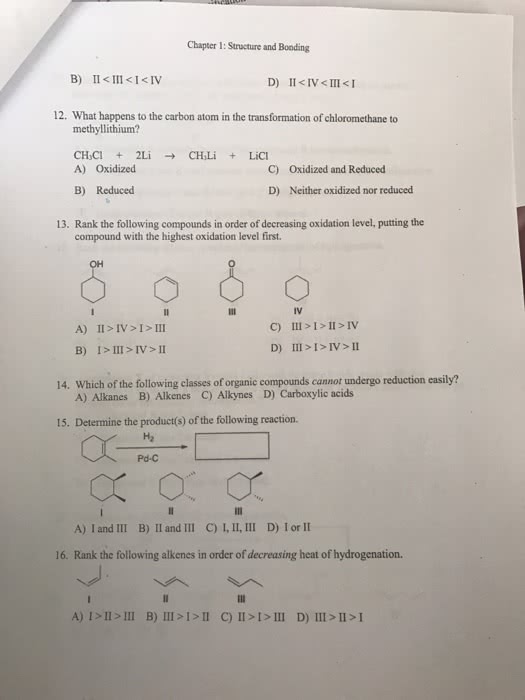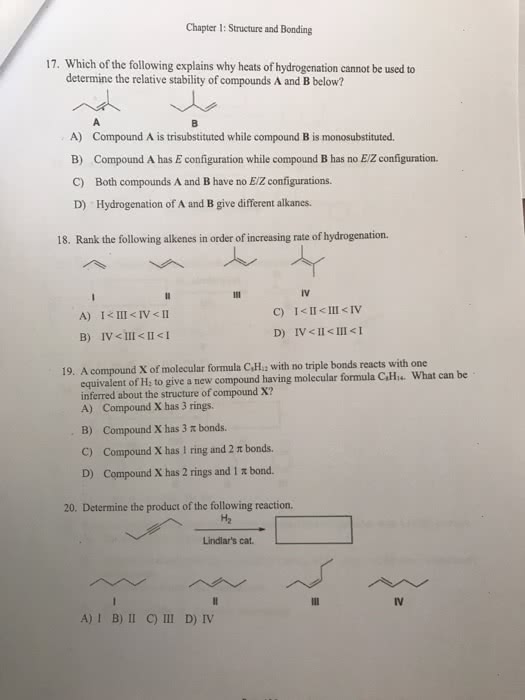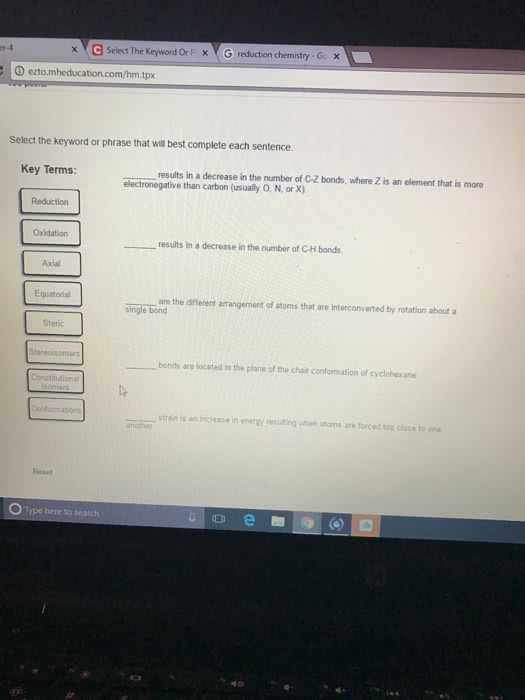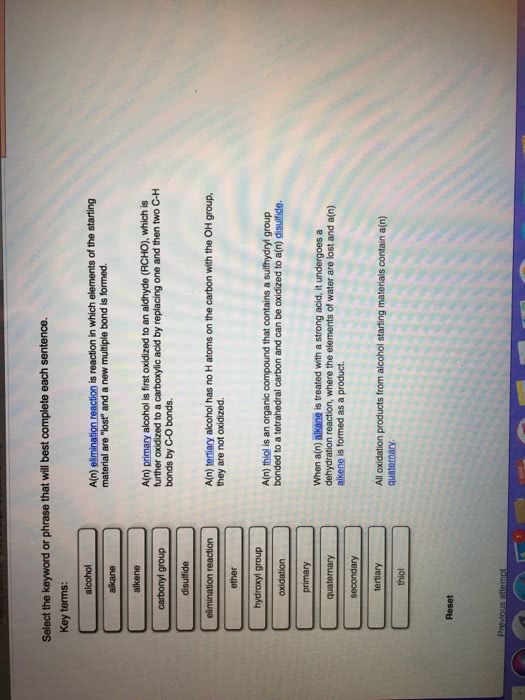CHEM 127 Lecture Notes - Lecture 1: Birch Reduction, Alkene, Alkyne

Organic Chemistry Notes
Chapter 12
12.2, Introduction
Oxidation results in an increase in the number of C-Z bonds (usually C-O bonds) or a decrease
in the number of C-H bonds
Reduction results in a decrease in the number of C-Z bonds (usually C-O bonds) or an increase
in the number of C-H bonds
- An organic compound such as CH4 can be oxidized by replacing C-H bonds with C-O bonds.
- The conversion of an alkyne to an alkene and an alkene to an alkane are examples of
reduction
12.2, Reducing Agents
All reducing agents provide the equivalent of two hydrogen atoms, but there are three types of
reductions, differing in how H2 is added
- The simplest reducing agent is molecular H2.
- Reductions of this sort are carried out in the presence of a metal catalyst that acts as a
surface on which reaction occurs.
- The second way to deliver H2 in a reduction is to add two protons and two electrons to a
substrate-that is, H2 = 2 H+ + 2 e-.
- Reducing agents of this sort use alkali metals as a source of electrons and liquid
ammonia (NH3) as a source of protons.
- Reductions with Na in NH3 are called dissolving metal reductions
- The third way to deliver the equivalent of two hydrogen atoms is to add hydride (H-) and a
proton (H+).
find more resources at oneclass.com
find more resources at oneclass.com

- The most common hydride reducing agents contain a hydrogen atom bonded to boron or
aluminum.
- Simple examples include sodium borohydride (NaBH4) and lithium
aluminum hydride (LiAlH4). These agents deliver H- to a substrate, and then a
proton is added from H2O or an alcohol
Metal hydride reagents act as a source of H- because they contain polar metal-hydrogen bonds
that place a partial negative charge on hydrogen.
12.3, Reduction of Alkenes
Reduction of an alkene forms an alkane by addition of H2.
- Two bonds are broken- the weak pi bond of the alkene and the H2 sigma bond- and two new
C-H bonds are formed
The addition of H2 occurs only in the presence of a metal catalyst, and thus, the reaction is
called catalytic hydrogenation.
- The catalyst consists of a metal-usually Pd, Pt, or Ni-absorbed onto a finely divided inert solid,
such as charcoal.
- example: the catalyst 10% Pd on carbon composed of 10% Pd and 90% carbon, by
weight. H2 adds in a syn fashion.
12.3, Hydrogenation and Alkene Stability
- Hydrogenation reactions are exothermic because the bonds in the product are stronger than the
bonds in the starting materials, making them similar to other alkene addition reactions.
- The (delta)Ho for hydrogenation, called the heat of hydrogenation, can be used as a
measure of the relative stability of two different alkenes that are hydrogenated to the
same alkane
- Example: both cis- and trans-2-butene are hydrogenated to butane, and the heat
of hydrogenation for the trans isomer is less than that for the cis isomer.
- Because less energy is released in converting the trans alkene to
butane, it must be lower in energy (more stable) to begin with.
find more resources at oneclass.com
find more resources at oneclass.com

- When hydrogenation of two alkenes gives the same alkane, the more stable alkene has the
smaller heat of hydrogenation
12.3B, The Mechanism of Catalytic Hydrogenation
- In the generally accepted mechanism for catalytic hydrogenation, the surface of the metal
catalyst binds both H2 and the alkene, and H2 is transferred to the pi bond in a rapid but stepwise
process
- The mechanism explains two facts about hydrogenation:
- Rapid, sequential addition of H2 occurs from the sie of the alkene complexed to the
metal surface, resulting in syn addition.
- Less crowded double bonds complex more readily to the catalyst surface, resulting in
faster reaction.
find more resources at oneclass.com
find more resources at oneclass.com
Document Summary
Oxidation results in an increase in the number of c-z bonds (usually c-o bonds) or a decrease in the number of c-h bonds. Reduction results in a decrease in the number of c-z bonds (usually c-o bonds) or an increase in the number of c-h bonds. An organic compound such as ch4 can be oxidized by replacing c-h bonds with c-o bonds. The conversion of an alkyne to an alkene and an alkene to an alkane are examples of reduction. All reducing agents provide the equivalent of two hydrogen atoms, but there are three types of reductions, differing in how h2 is added. The simplest reducing agent is molecular h2. The second way to deliver h2 in a reduction is to add two protons and two electrons to a substrate-that is, h2 = 2 h+ + 2 e-. The third way to deliver the equivalent of two hydrogen atoms is to add hydride (h-) and a proton (h+).


